We are DVSA: annual review, 2017 to 2018
Published 19 July 2018
Foreword
Welcome to DVSA’s second annual review - ‘We are DVSA’.
In March 2017 we published our 5-year strategy, which set out our aims and ambitions for helping you stay safe on Britain’s roads. Since then, we’ve made good progress on the commitments we made under each of the 3 themes of our strategy. In this year’s review we’ll update you on what we’ve achieved so far, and tell you of our plans for the coming year.
We’ll share some of our highlights from 2017 to 2018, and introduce you to some of the teams and individuals who’ve worked so hard to achieve our successes. For example, you might already know about:
- our work to modernise the driving test, to help you through a lifetime of safe driving
- how to sign up to our new MOT reminder service, to help you keep your vehicle safe to drive
- the launch of our earned recognition scheme, which allows us to concentrate our efforts on dealing with unsafe drivers and vehicles
And we’ll also celebrate our colleagues, who are our greatest asset. We value their knowledge and expertise and are immensely proud of their skill and dedication. We share their passion for improving road safety, and are committed to working together to achieve our clear vision for safer drivers, safer vehicles and safer journeys for all.
Gareth Llewellyn, Chief Executive Officer
Bridget Rosewell, Non-Executive Chair
Strategy update
Helping you through a lifetime of safe driving
We said we’d make sure new drivers are better prepared for a lifetime of safe driving and have access to the guidance, advice and training that helps keep them safe.
We created ‘Show me’ and ‘Tell me’ videos to explain to candidates what their driving examiner may ask them to show or tell during their driving test. For example, ‘when it’s safe, show me how you use the rear window demister.’ We published them to YouTube, where ‘Wolf Eyes’ commented on ‘Show me’, “This video is a lifesaver!”
Helping you keep your vehicle safe to drive
We said we’d make sure it’s easier for vehicle testers to access up-to-date standards, guidance and information.
We launched the ‘Manage your ATF’ application prototype. Authorised testing facilities (ATFs) are private testing centres which test the safety standards of commercial vehicles like lorries and buses. The app allows them to improve their service, with its functions for managing testing periods and the site’s performance, finding guidance and receiving updates from DVSA.
Protecting you from unsafe drivers and vehicles
We said we’d find and prosecute anyone who tries to cheat the systems that are in place to keep you safe - whether that’s anyone giving illegal driving instruction, cheating at the theory test or fraudulently passing vehicles at MOT.
We caught 126 people who were using technology (like Bluetooth earpieces) to cheat at the theory test. We also caught 118 people impersonating the real candidates in the theory and practical tests. The police dealt with all of these cheats, some of whom received prison sentences.
We stopped the ‘Jenga lorry’, and fined the driver £100 for load security and £80 for immobilisation.

The driver if this overloaded vehicle was fined £100 for load security offences
A great place to work
We said that, in everything we do, we value:
- professional expertise
- being respectful
- working as one team
- continuous improvement
- operating in the community
- achieving results
- good service for users
We implemented action plans to support the 5-year strategy - plans which will make DVSA a great place to work.
They include ways to make our working environments better for staff and customers, and to improve our communications. The plans also set out how and where we’ll recruit new colleagues, and our ambitions for becoming a digitally-enabled organisation.
Helping you through a lifetime of safe driving
Facts and figures
- 2.1 million theory tests carried out
- 1.9 million driving tests carried out
- 81.1% of driving test candidates booked a test within 6 weeks of their preferred date
- 96.8% of theory test candidates booked a test within 2 weeks of their preferred date
- 583,000+ visits to GOV.UK to find driving schools, lessons and instructors
- 39,000+ approved driving instructors registered with us
We changed the driving test
In December we introduced some radical changes to the driving test.
Based on evidence which showed that most collisions happen on high-speed roads, and that learners find independent driving valuable, we brought in changes to prepare them for real-life driving. The new test includes a longer period of independent driving, following a sat nav while driving, and more driving on roads (rather than doing manoeuvres on housing estates).
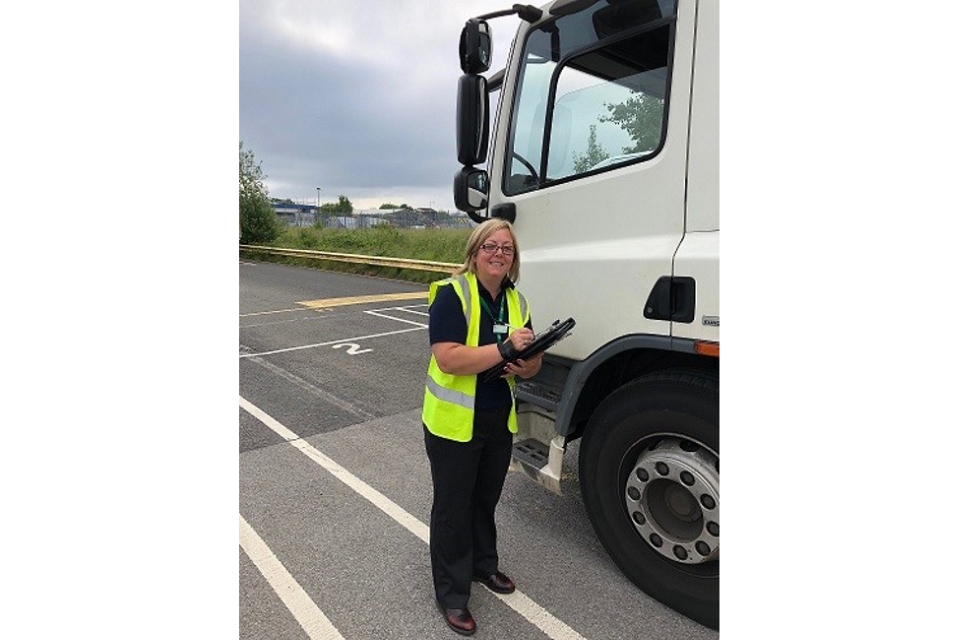
Julie Ford, driving examiner
The feedback we’ve had from our driving examiners about the changes has been really positive.
It’s great to be part of an organisation that helps improve road safety, and the training I had on the new parts of the test was very thorough. The test changes really help prepare learner drivers for driving on their own and managing real life distractions.
And we’ve had some great feedback from driving instructors and their pupils about the new test.
The sat nav is a good idea. It makes the candidate think ahead more and prepare more, rather than relying totally on the instructor.
Rob Brown – driving instructor
The new test is more straightforward… and having the sat nav helps you to look where you’re going.
Test candidate
We also won an award for our communications work around the new driving test, which you can read about later.
We topped the charts with our theory test app
DVSA was the Christmas number 1, as our official theory test app became Apple’s top paid-for app of 2017!
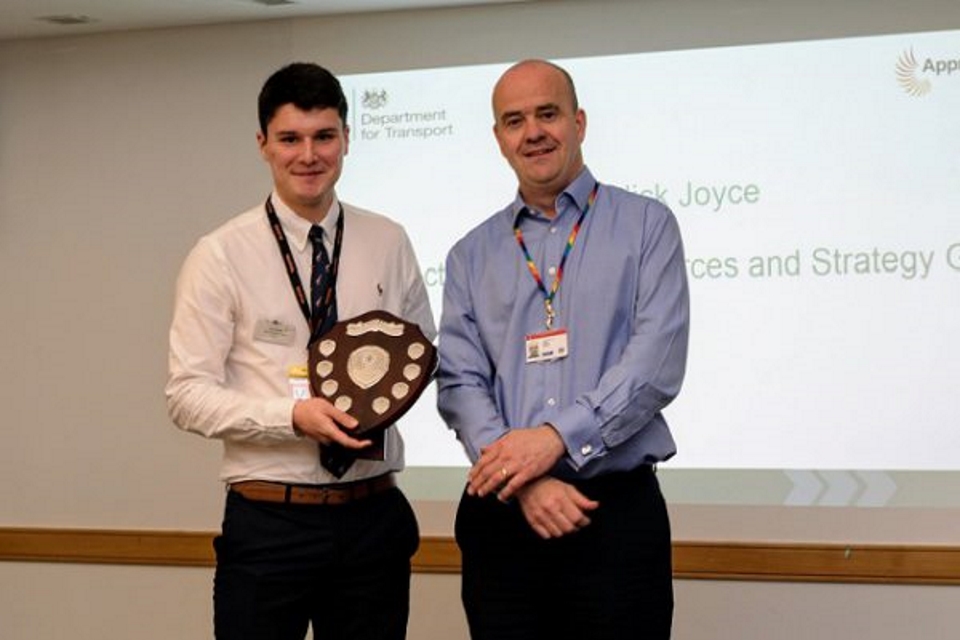
Tom Parkin was named Department for Transport apprentice of the year.
Simon Lusty, our publications manager, said:
In 2017, 24% of all people who took their theory test used the DVSA app to learn. We also sold our millionth download, so reaching No.1 on top of that was a fantastic achievement.
The app has an amazing 4.6 stars on the App Store, and here’s what one of our happy customers had to say.
This app provides everything you need, and believe me when I say that it gives 100% accuracy when compared to the real thing.
Hannah on the App Store
We’re helping learner drivers to find the best instructor for them
We updated our service which helps learners to find an approved driving instructor (ADI). As well as saying where they’re based so learners can find their nearest, ADIs can now include information about their performance and a link to their website.
They can share the grade they achieved in their standards check, whether they’ve signed up to the industry code of practice or are involved in continuous professional development. Then learners can filter the search results to include only those ADIs who share this information.
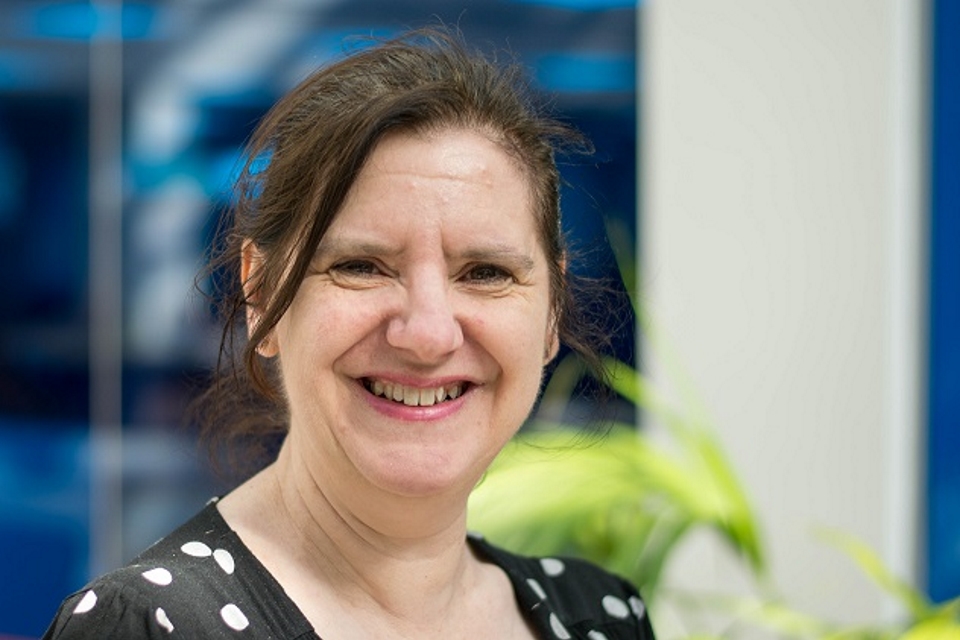
Jacqui Turland, ADI Registrar
Jacqui Turland, ADI Registrar, says:
We improved the service to help learner drivers find the best ADI for their needs. Now they can learn more about the instructors in their area, and the new information will help them to make the best choice.
We’ve been working on improving motorcycle training and security
The motorcycle team continued the work we began last year with our ‘Improving moped and motorcycle training’ consultation.
We had 2,299 responses, most of which were really positive. Many comments were about the poor standard of theory knowledge amongst first time road users.
So we’re working with motorcycle trainers to improve knowledge and understanding at the pre-compulsory basic training (CBT) stage.
Last year saw a huge rise in moped and motorcycle thefts, especially in London. So we also worked closely with our motorcycle stakeholders to help promote the Metropolitan Police’s ‘Be Safe’ theft awareness campaign.
We’ve been getting lorry drivers on the road
We prioritised the large goods vehicle (LGV) driving test, helping businesses which use large vehicles. We kept waiting times to under 2 weeks, delivering tests from our 77 DVSA tests centres and 77 sites provided by the LGV training industry.
Because LGV drivers control some of the largest vehicles on our roads, it’s particularly important that they’re trained and tested to the standards we set.

Simon Lusty, Publications Manager
Julie Ford, driving examiner, said:
I’m immensely proud of the work we do that, not only keeps people safe, but also helps keep businesses moving.
Helping you keep your vehicle safe to drive
** Facts and figures**
- 37.8 million MOT certificates issued
- 23,000+ MOT garages regulated by us
- 27.1 million visits to our service to check the MOT history of a vehicle
- 570 authorised testing facilities hosting annual tests (MOTs) for lorries, buses and coaches
- 660,000 people signed up for MOT reminders by the end of March 2018
- 656,000 heavy goods vehicle tests carried out
We launched new MOT services
Last year we officially launched a test version of ‘Get MOT reminders’. The award-nominated service lets you sign up for free to get text reminders or emails reminding you when your car’s MOT is due. We developed the service because research showed that around 75% of people who were late for their MOT had actually forgotten the date.
By the end of March 2018, more than 660,000 car owners had signed up to receive MOT reminders. Everyone who’s signed up will receive an email or text 4 weeks before the MOT’s due and then a second email 2 weeks before (if their MOT still hasn’t been taken).

Chris Price, MOT Product Manager
MOT Product Manager, Chris Price said:
With more than 35.6 million vehicle owners in this country, we’re keen to get many more signed up. If you haven’t yet done it, sign up now – it’s so easy and means you’ll never miss your MOT.
We’ve also introduced a new service on GOV.UK where you can check a vehicle’s MOT history. Using just the vehicle’s registration number you can find out when its MOT runs out, what it’s failed on and its mileage.
We created this service to help people who are buying a used car to make the best choice. And it’s proved to be very popular - it’s one of the top 10 government services. We even had 18,000 hits on Christmas Day!
We’ve improved the vehicle recall service
When a manufacturer has to recall a vehicle because there’s a serious problem with the vehicle or one of its parts, then you need to get that car fixed by the manufacturer. Making sure people understand what to do in these cases is vital to road safety, so we’ve improved the way we share information with the public and manufacturers about vehicle recalls.
We publish a monthly vehicle recalls bulletin. Anyone can sign up for it, but it’s especially helpful to the motor trade. They use the information we provide to tell their customers about potential safety problems with their vehicles, increasing the reach of our messages.
We monitor social media to pick up on trends involving vehicle faults and problems. Then we take this information directly to the manufacturer to make sure they look into it thoroughly.
We’ve also launched a new online service on GOV.UK. ‘Check a recall’ is a feature of the MOT history service.
After a number of high profile recalls, rather than relying solely on motor manufacturers, we’re now encouraging the public to tell us about safety problems with their vehicles.And, during 2018 to 2019, we’ll be launching a campaign to promote and encourage this behaviour.
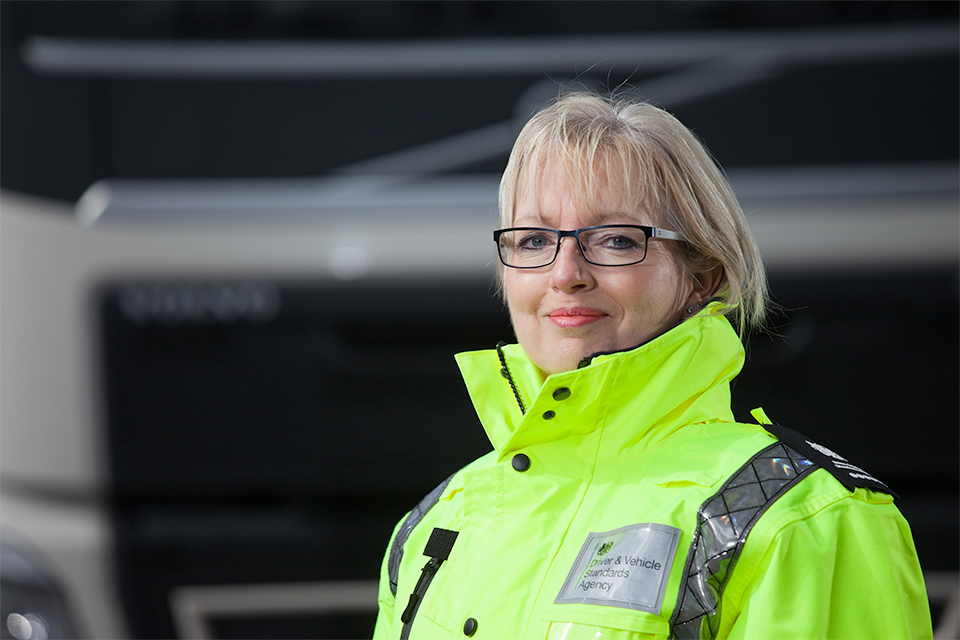
Melanie York, traffic examiner
Ian Bartlett, Head of Vehicle Safety, said:
Our priority is to help protect you from unsafe vehicles. Vehicle recalls play a key part in this and, if anybody suspects that their vehicle has an outstanding recall, we’ve made it easier for them to find out. Now we’re going to make it easier for motorists to report a suspected or potential safety issue.
We’ve met over 98% of our HGV booking commitments
We carry out about 750,000 lorry, bus and coach tests a year at the UK’s 570 authorised testing facilities (ATFs). The ATFs are privately owned by organisations like bus and lorry operators, but DVSA sets the standards and delivers the tests.
Hugh Rimmer, Operations Manager, said:
Using the ATFs, we’ve met 98.6% of our booking commitments this year.
It’s been really hard work and I know that we’re having some difficulty with making sure we have enough testers in some parts of the country. So we’re recruiting around 100 more. I’m really looking forward to helping with their inductions.
We’ve done more work on the #TowSafe4Freddie campaign
Freddie Hussey’s tragic death in 2014, aged 3, inspired the campaign to get people to use their small trailers safely. At a special summit with the Transport Minister, Bill Pope explained how we design content to help people stay safe, using proven behaviour change techniques. Freddie’s parents and their MP thanked DVSA. They said our online content and social media efforts make a huge contribution to public awareness.
An offer of free safety checks by the National Towing and Trailer Association also boosted the campaign.
TowSafe4Freddie has reached about 300,000 people on social media, with around 45,000 views of the guidance. Our YouTube video has received nearly 50,000 views.
Protecting you from unsafe drivers and vehicles
Facts and figures
- 278,000 roadside vehicle checks carried out
- £3,900,000 in revenue collected from fixed penalties
- 388 emissions cheat devices found fitted to large vehicles
- 56 organisations awarded DVSA earned recognition founder-member status
- 533,000 visits to our service to check if a vehicle, part or accessory has been recalled
- 1,038 cases prosecuted by our Counter-Fraud and Investigation team
We’re recognising operators that do the right thing
Under a new scheme, operators with large vehicles who share performance data and can prove they meet DVSA standards are less likely to be stopped for roadside inspections. We call this ‘earned recognition’ and taking part saves operators time and money. It also allows our traffic enforcement staff, like Melanie York, to concentrate on catching operators who aren’t doing the right thing.
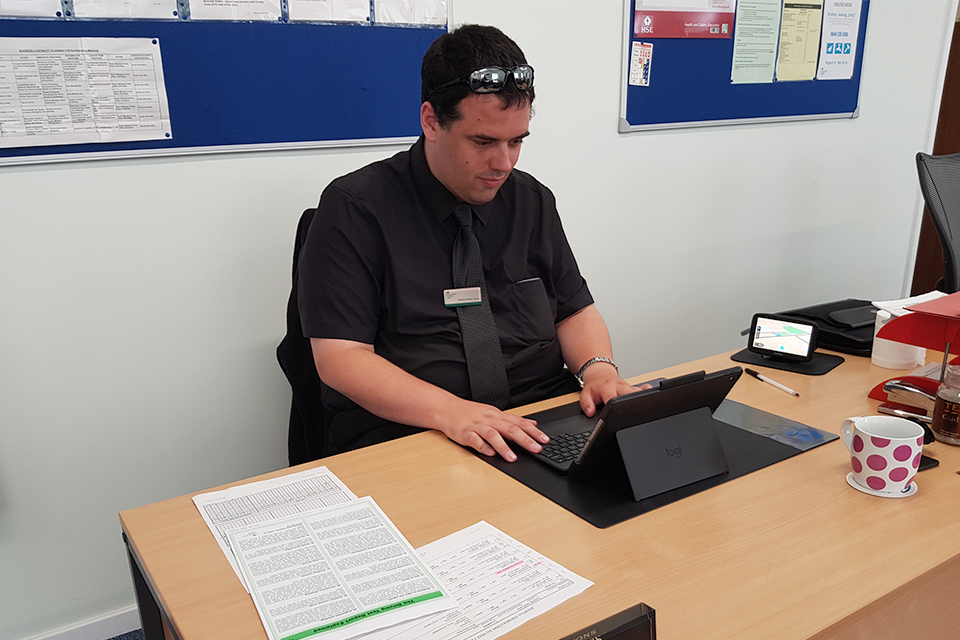
Richard Lyons, driving examiner
We launched the scheme in April 2018, following a one-year pilot. All 56 organisations which took part in the pilot were awarded founder member status.
Monica Coe of New Image Stone said:
Being recognised as an approved operator and founder member is something we’re proud of. We believe that it’s only a matter of time before our clients decide this scheme is a requirement to win work.
We’ve been helping to improve air quality
We started a scheme to check large vehicles for emissions cheat devices. They fool the lorry or bus’s onboard computer into thinking the emission controls are working, allowing harmful gases like nitrogen oxide to be pumped into the air unchecked.
So far, we’ve found 388 cheat devices and investigated 202 operators.
Stephen Middleton, vehicle examiner, says:
Air quality is so important in terms of health, particularly in built up areas. We’ve worked to develop the best ways of finding these devices. It’s really satisfying to be involved from the start and to see the process right through to public inquiry, where operators have had licences suspended or removed.
We’ve joined forces to check dangerous vehicles
Two years ago, we began working with Transport for London, City of London police and the Metropolitan Police, forming the London Freight Enforcement Partnership (LFEP). It’s the first multi-agency unit doing targeted checks on dangerously non-compliant vehicles and drivers in London.
The team has checked more than 33,000 vehicles. And we’ve given out over 9,000 fixed penalty notices and 5,600 mechanical prohibitions (meaning that vehicles with the most serious faults can’t be driven until they’re fixed). Our checks have led to 106 arrests, 221 vehicle seizures and 12 operator licence revocations.
Julia Mepsted, traffic examiner, said
Working alongside our colleagues in the police and Transport for London, we’re successfully cracking down on rogue drivers and operators, making London’s roads safer for all.
We created a search app to target unsafe vehicles
We developed the app in-house to enable frontline staff to quickly learn about operators and their vehicles during roadside encounters and at annual vehicle tests. Our driving examiners can also use it to check whether a vehicle’s fit to be used for a driving test.
By typing in a registration number, or by taking a picture of a registration plate with their smartphone camera, colleagues can spot potential problems. The app gives them detailed information - like a vehicle’s technical records, operator details, enforcement history and when its MOT expires.

Helen Meechan, traffic examiner
Helen Meechan, traffic examiner, says:
I work a lot with the police, and previously had to run a registration number through several of their websites and databases before deciding whether to target a vehicle. Now I just enter it into the app and the information’s at my fingertips. It’s the best bit of kit we’ve had in years!
We’ve been protecting learner drivers
Most approved driving instructors (ADIs) behave professionally towards their pupils, but last year we received 146 reports about ADI misconduct.
Some learners reported seriously inappropriate behaviour. For example, ADIs touching pupils or sending them offensive messages. In some cases we investigated allegations of sexual assault, which we referred to the police.
We have to make sure that learner drivers are in a safe learning environment, so we take ADI misconduct very seriously. Our investigations help the registrar to decide whether an ADI is ‘fit and proper’ and can continue teaching.

Andy Rice, Head of Counter-Fraud and Investigations
Andy Rice, Head of Counter-Fraud and Investigations, says:
We have a dedicated team of investigators working solely on ADI misconduct. Protecting learner drivers from instructors’ inappropriate behaviour is important work.
We’ve run a successful brake-testing campaign
We were getting reports about operators’ vehicles with dodgy brakes, so we launched a campaign to persuade operators to carry out effective brake-testing. Working with traffic commissioners, we published stats for faulty brakes and gave operators advice through our ‘Moving On’ blog. We also encouraged operators to analyse their safety inspection records and plan regular brake tests.
90.4% of the operators who reviewed their brake testing said they were satisfied they were doing the right thing. 86.5% thought brake testing was very important in protecting people from unsafe vehicles and drivers.
Chris Dibsdall, Media Officer, says:
Our work in the press office is about making Britain’s roads safe. It’s great to work with other organisations like the Office of the Traffic Commissioner and see our campaigns making a real difference.
DVSA: a great place to work
Facts and figures
- 4,500+ people work at DVSA to help you stay safe on Britain’s roads
- 5 staff network groups representing our people
- 81 apprentices working at DVSA
- 180+ new driving examiners recruited
- 2,000 smartphones issued to our people so they can work more efficiently
- 70+ new vehicle standards assessors recruited
We’ve given our people the technology to do their jobs
We want our staff to have the right tools and technology to do their jobs, whenever and wherever they’re working.
We’ve given people smartphones, with standard and bespoke apps that help them work more efficiently. Office365 allows colleagues to stay connected and work better together. And access to emails, the intranet and documents make mobile-working as easy as being connected to a desktop.
In our main offices, we’ve increased the number of interactive, multi-user touch screens, meaning less time travelling to meetings, and more time to be productive. And we brought our IT helpdesk in-house, allowing us to respond to technical issues directly and quickly, giving our people a better service.
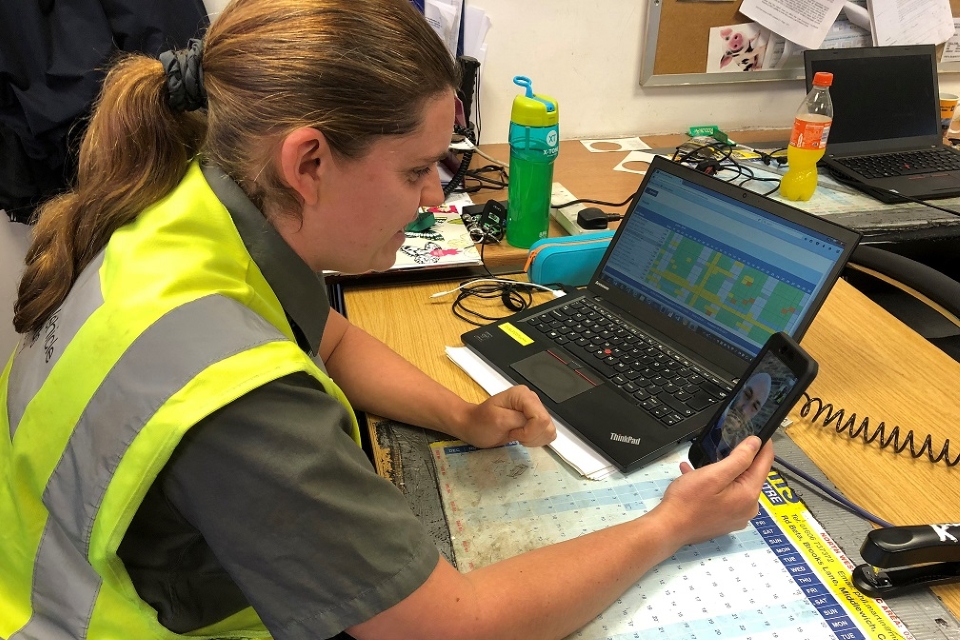
Ruth James, technical team leader
Ruth James, technical team leader, says:
My team are quite dispersed, so I can’t always get to see them in person. With our smartphones we keep in contact using email, Skype or video messaging, which is great because I can deal with any issues or questions quickly and easily. And with access to my documents, if I need any evidence for appeals I have it all to hand too.
This new technology is just the start; it’s already improving frontline colleagues’ ability to do their jobs effectively.
We won a communications Oscar!
The hard work we did in comms leading up to the driving test changes paid off in more ways than one.
By 4 December everyone knew what they needed to know about the test. We sent out press releases, set up interviews and arranged mock driving tests for journalists. We also created graphics for social media and YouTube videos showing learner drivers and driving instructors everything they needed to know.
Then our fantastic work was recognised when we won the Chartered Institute of Public Relations (CIPR) award for excellence in a public sector campaign - a communications Oscar!
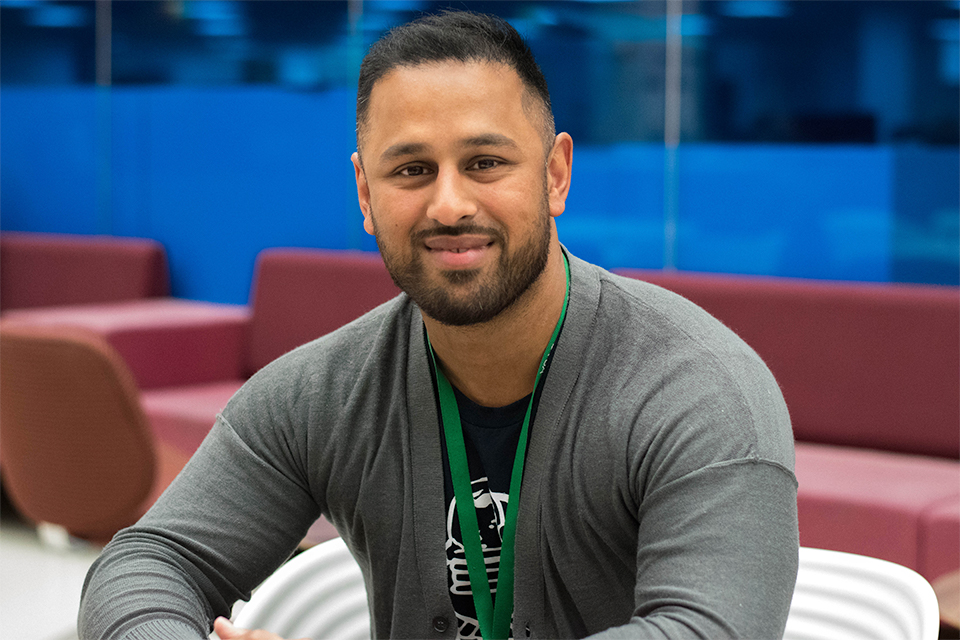
Dipesh Chauhan
Olivia Roe, Media Officer, says:
I’m really proud of the hard work my team did on announcing the changes and, to top it off, we won the CIPR award! It’s amazing to have our effort recognised like this.
We’re connecting through Yammer
Yammer’s our new, internal social network. It gives us a place to share ideas, anecdotes and photos. And it helps remote workers to connect with their teams.
Over 70% of staff are now active users and they can log on from whatever device they’re using. People are connecting with colleagues from different parts of the country. They’re asking the directors questions, posting pictures of their successes, praising colleagues and finding out what others are up to.
Richard Lyons, driving examiner, says:
Using the Yammer app on my iPad allows me to connect in a way that wasn’t possible before. I can share experiences, incidents and suggestions, and work with other teams across the agency.
Yammer’s opened everyone’s eyes up to what DVSA does to make everyone safer on Britain’s roads, and it helps me feel part of that.
We’re dealing with unwanted behaviour
Our people survey told us that some colleagues had experienced discrimination, bullying or harassment.
We want people to be treated - and to treat others - with dignity and respect. So, working with the trade unions and staff groups, we focused on stopping unwanted behaviour and dealing with it appropriately when it happens.
We trained investigators, who can look into cases impartially, consistently and quickly. We also created a team of mediators who help colleagues resolve their disagreements and improve working relationships informally and confidentially.
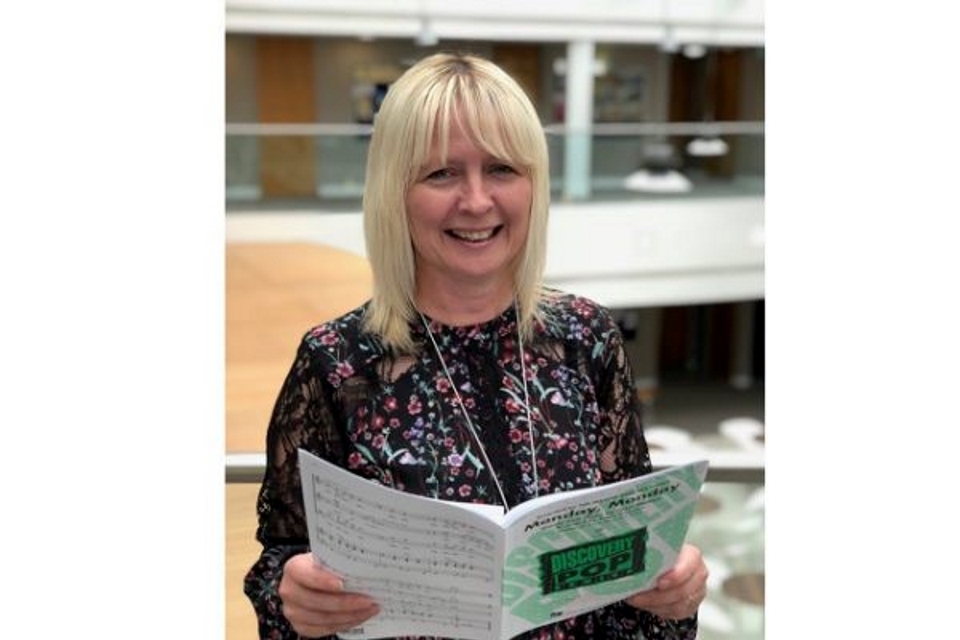
Diane Williamson
Diane Williamson, mediator, said:
People tell me it’s a relief to share their side of things in a controlled and confidential environment. Nearly everyone wants to resolve their differences and have a better working relationship.
It’s really rewarding being part of something that makes a real difference to colleagues.
We’ve been tackling assaults on our staff
Most of our customers really appreciate the services we provide. But, in 2016, over 300 of our driving examiners, vehicle testers and roadside enforcement staff experienced physical or verbal abuse at work.
That’s unacceptable, so we launched a campaign to tackle abusive behaviour. It promoted the message to customers that we won’t tolerate verbal or physical assaults on our colleagues. We also supported staff by explaining what they should do if something happened to them or a colleague, and what we’d do about reported incidents - however trivial they may think they seem.
Leanne Aslin, who worked on the campaign, said:
By targeting customers and staff in this campaign, we hope to see a reduction in incidents, and for colleagues to feel safer in their work.
We’re looking after our colleagues’ wellbeing
We want our people to be healthy and happy, so we’ve introduced ways to help them stay well.
Mental health is a priority, so we’ve trained 25 mental health first aiders (MHFA), who know how to spot the signs of mental ill health. Just like a physical first aider, who’ll be there if you’re injured or become ill, our MHFAs are there to help with the first symptoms of emotional distress. They’ll look after colleagues whose mental health is suffering, then help them to get further support if it’s appropriate.
We also have a confidential counselling and information helpline, and a website full of articles, videos and podcasts. They give advice on subjects like depression, debt and stress.
We’re looking after people’s physical wellbeing as well. We’ve introduced a physiotherapy scheme, where colleagues can get a free face-to-face assessment with a trained physiotherapist, then up to 4 treatment sessions. Karl Steel, a driving examiner in Leeds, says:
I used the physiotherapy scheme after suffering an injury from an accident whilst conducting a driving test. The therapy made a huge difference.
And we offered all staff a free flu jab. Stuart Parsons, a driving examiner in Rugby, took advantage of this. Stuart says:
I didn’t catch flu last year, which was great for me and for DVSA - as I didn’t lose any working days to this illness. I’ll be taking part in the scheme again this year.
Our staff network groups have gone from strength to strength
Our staff network groups (SNGs) have been going for 3 years now. They exist to make the voices, talents and concerns of their members heard and seen. And they help DVSA become a more diverse and inclusive organisation.
The SNGs have played a significant role in changing and introducing policies over the last year, so here are some highlights of their work.
embRACE (for our black, Asian and minority ethnic members of staff) supported the installation of multi-faith rooms in DVSA buildings. They’ve also made sure that there are inclusive menus at our residential DVSA training centres.
Enabled (representing disabled members of staff) has created a guide to support line managers of individuals with disabilities.
PRIDE (for our LGBTI members of staff) wrote the DVSA submission for the Stonewall Workplace Index 2017.
Time2Care (for our colleagues who are carers) has drafted a carers’ policy, new carers’ passport and guidance.
Women’s Integrated Network (representing women at DVSA) has raised awareness and understanding of the support available for new parents.

Ian Bartlett, Head of Vehicle Safety
Dipesh Chauhan, project support officer and member of embRACE, says:
I feel I now have a voice as a BAME individual, and I hope to help DVSA and embRACE become the best versions of ourselves.
We’ve given our motorcycle examiners shiny new bikes
The procurement team did the groundwork by asking our examiners which bikes they thought would be suitable for the job. Then they drew up a list of 9 and asked our examiners to choose which one they’d like. Each examiner was trained how to ride their own machine and others in the fleet, in case of breakdowns.
Simon Hadley, motorcycle examiner at Kettering test centre, said:
The fleet was starting to look old and tired, but with the new fleet I feel I look like a professional riding examiner. The bikes are all marked up as DVSA - not too much, but enough to make people aware - so I’m really chuffed.
We helped to clean up our community
Making our workplaces as pleasant as possible is really important to us. And we’re also keen to get involved in projects which make a difference to the communities we work in.
So, this year, Lynne Templar and Jane Glancy joined the DVSA team that took part in a litter pick. They helped clear away and recycle rubbish near to our Berkeley House office in Bristol.
The community project was sponsored by Bristol Waste and included Easton Community Centre and local charity Up Our Street.
Patrycja Pinkowska, community engagement officer for Up Our Street said:
DVSA did an amazing job, and it’s great to hear that they’re planning to continue their community action.
We’ve increased the number of apprentices… and we have more winners!
During 2017 to 2018 we started 44 successful apprenticeship programmes across the country. And we’ve had more award winners.
Emily Herbert won DVSA’s ‘Apprentice Manager’ and ‘Ambassador to Apprentices’ awards.
Tom Parkin won DVSA’s ‘Apprentice of the Year’ award. Then, we’re very proud to say, he went on to win the Department for Transport’s ‘Apprentice of the Year’ award!

Abigail Britten and Olivia Roe collect a CIPR Excellence Award.
Cara McMahon, DVSA’s Head of Talent and Capability says:
This is a fantastic recognition for the initiative, commitment and performance that the apprentices have shown in their work.
We’ve introduced induction sessions to welcome new members of staff
As well as the usual business - like telling new starters about policies and procedures, we now also invite them to induction sessions. They give new people the opportunity to network with colleagues from other teams, and to meet our Chief Executive, Gareth, or one of the directors. They find out about working for DVSA, how we fit into the wider DfT family and get a feel for our culture.
Laura Fenn, our new DVSA Vendor Manager, said:
It was a great day. The best part was that I got to meet people from across the business, find out about their roles, and understand how we all fit together to make DVSA a great place to work.
We’ve recruited over 250 frontline staff
Vehicle standards assessors (VSA)
VSAs test large vehicles at garages across the country, to protect you from unsafe drivers and vehicles. We welcomed over 70 new VSAs last year.

Shane Allen, vehicle standards assessor
Shane Allen, a new VSA, says:
I started working at DVSA because I wanted a career, rather than being stuck at a mechanic’s. DVSA gives me the stability and opportunity to develop myself.
It’s very important work – some of the vehicles you see are in such a dangerous state, you just think about what could happen if they stayed out on the road. Heaven knows what could happen if we weren’t checking them.
Driving examiners (DE)
We conducted 1.8 million car driving tests last year - the most in nearly 10 years. So, to keep our waiting times low, we hired over 180 new DEs.
Jane Rodda, a new DE, says:
A DE can read road situations in an instant; it becomes second nature. This skill makes you confident in the decisions you make. Road safety is paramount and I know that, at the end of every test, I’ve made the right decision.
My job is made by my colleagues. The diversity of people within our test centre, from different backgrounds, test centres and roles gives a great perspective from others. Everyone is supportive and happy to help one another.
Our income and costs
In the financial year 2017 to 2018 we made a surplus of £13.8 million which we’ll invest to improve our services by:
- replacing and improving customer-facing digital services
- improving mobile technology and other tools to support our staff
- modernising our estate
Income: £387.6 million
| Area | Income |
|---|---|
| Driver services | £206.6 million |
| Vehicle services | £100.4 million |
| MOT services | £62.1 million |
| Licensing services | £13.1 million |
| Other services | £5.4 million |
Costs: £373.8 million
| Area | Costs |
|---|---|
| Staff costs | £176.9 million |
| Other operating charges | £162.3 million |
| Asset-related costs | £20.1 million |
| Net finance costs | £7.0 million |
| Dividend payable to DfT | £7.5 million |
Our people
We have around 4,500 permanent members of staff. Most of them work on the frontline, and we’ve taken on over 250 new people to work in roles like driving examiner, vehicle examiner and enforcement officer. The rest of our colleagues work in digital or supporting roles. We all contribute to making Britain’s roads safer.
Looking ahead
Helping you through a lifetime of safe driving
Learner drivers on motorways
On 4 June 2018 the law changed to allow learner drivers on motorways for the first time. They have to be accompanied by an approved driving instructor (ADI) in a car with dual-controls. They also have to be at a place in their learning where they’re skilful and confident enough to handle motorway driving.
A public consultation agreed that allowing learners to start practising motorway driving before they took their test would be a good thing for road safety. Over the coming year, we’ll be giving guidance to ADIs and their pupils, and helping other road users understand how to behave in sharing the motorways with learner drivers.
Making the theory test more accessible
We worked with the British Dyslexia Association, the British Deaf Association and others to identify theory test questions that some candidates with disabilities found difficult to understand. Then we rewrote these in clearer, plainer language. We introduced the new questions on 1 May 2018, following successful trialling with candidates. We’ll analyse test results over the coming year to see what difference these make.
We’re also developing video clips which could replace some of the theory test questions. The new clips will mean less text for candidates to read, making the test more accessible.
The video clips show road situations from different perspectives (like the driver’s point of view and from outside the car) potentially allowing us to ask different types of question. We believe that using video will help to protect the test from the possibility of cheating or fraud.
Helping you keep your vehicle safe to drive
More changes to the MOT service
In May 2018 we changed how we test cars, vans, motorcycles and light passenger vehicles. The main change was the introduction of three new defect categories – dangerous, major and minor. And we introduced stricter rules for diesel car emissions, redesigned the MOT certificate and changed the rules around some vehicles over 40 years not needing an MOT.
Over the coming year we’re also going to widen our ‘Get an MOT reminder’ service to include heavy goods vehicles (HGV). So vehicle operators will also get an email or text reminder to take their vehicle to test, making sure it continues to be safe on the road.
Helping people do their daily walkaround checks
Carrying out daily walkaround checks of large vehicles is a vital part of a making sure vehicles are safe to drive. Drivers need to be able to identify and report any defects or signs of defects that could affect their vehicle’s safety.
So, we’ll improve our guidance for drivers on how to carry out these important safety checks. We’ll create new videos that show what to do, and publish better guidance on GOV.UK on what should be reported.
We’ll also use social media to regularly remind drivers about the walkaround checks they need to do, highlighting the guidance that’s available to them.
Protecting you from unsafe drivers and vehicles
Exploring behaviour around drivers’ hours
We’ll be investing in behavioural research to look into why some large vehicle drivers take the risk of driving over their hours.
In 2016, driving while tired was a factor in 61 accidents involving lorries and buses. And almost a quarter of injuries caused by accidents involving lorries are fatal or serious (compared to 1 in 8 for crashes in general).
Despite the risks and the penalties, we’re still finding large numbers of drivers who are willing to drive more hours than they legally should. When we understand the reasons why they do this, we’ll plan a campaign to promote the importance of taking breaks.
Automatic number plate recognition (ANPR) partnership
We use ANPR to identify, stop and check drivers and vehicles which may not be as safe as they should be. And, over the coming year, we’ll work with the partnership to improve the way we use ANPR and give us access to a much bigger network.
We’ll combine resources with Highways England, the Home Office and the National Police Chiefs’ Council to develop the ANPR infrastructure. Together, we’ll enforce vehicle safety and environmental standards, making you safer on Britain’s roads.
A great place to work
We’ll continue to develop our digital capability
Our driving examiners will move away from paper forms and use tablets to mark the driving test and capture the result. Traffic examiners will be able to record roadside encounter details on a mobile device. Vehicle testing staff will start using smartphones to record tests, find answers to questions, and access a vehicle’s history.
We’ll move our network to the cloud to improve performance and reliability. And we’ll upgrade devices to Windows 10, with features that can help productivity.
Keeping you safe on our roads doesn’t have to cost the earth
We’re working hard to reduce our carbon emissions, create less waste and use resources more wisely. But we’re also ambitious to do more.
We’ll work on improving air quality for local communities through our work on vehicle emissions. And we want make a more positive contribution to the communities we work in.
We’ll do that through supporting work to improve local environments. We’ll also work on creating a workforce that’s better trained and supported, is more inclusive, and reflects the communities we work in.
Building on our work to tackle bullying, discrimination and harassment
Everyone in DVSA will attend a bespoke ‘building respect in the workplace’ course. The course will help us understand what is and what’s not acceptable behaviour, and includes content about how to politely challenge people when their behaviour is unacceptable.
We’re also developing workshops which teams will be able to run themselves, reinforcing what they’ve learned on the course. They include scenarios about things like conflict and reasonableness, which colleagues can work on to resolve problems.
We’re listening
Last year we listened especially hard. Our customer satisfaction survey told us that 99% were satisfied and, at our call centres, we:
- answered 753,000 calls - 73% within 60 seconds, exceeding our 70% target
- replied to 80,000 emails within 5 days, against a target of 10 days
- replied to 95.7% of social media questions within an hour, against a target of 90%
- processed 111,225 applications for technical tests - 82% within service level
And, when 1 in 5 of you told us we were taking too long to answer calls, we set ourselves the target of answering 70% within just 30 seconds.
The Customer Service Excellence assessor paid us a visit this year, and this is one of her comments:
The commitment and depth of knowledge of staff is particularly impressive.
We’ve also been answering official correspondence – like the letters your MP will send, asking something on your behalf. Our team dealt with:
- 98% of over 7,500 pieces of correspondence within 10 working days (target 90%)
- 100% of 513 Freedom of Information requests in 20 working days (target 93%)
We even get good feedback from people who complain! This is what one person said:
Everything was very fair and helpful. Thank you very much for all your help and time.
Get in touch
Call or email us, look for us on Twitter or Facebook, or find your answers on GOV.UK. However you decide to contact us, you can be sure we’re listening.
